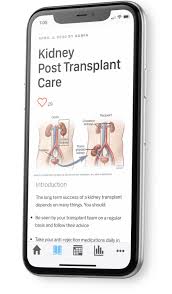Author Interviews, Frailty, Genetic Research, Geriatrics, University of Pittsburgh / 13.10.2020
Dopamine Genotype Linked to Walking Speed in Older Adults
MedicalResearch.com Interview with:
Caterina Rosano, M.D., M.P.H.
Professor of Epidemiology
University of Pittsburgh Graduate School of Public Health
MedicalResearch.com: What is the background for this study? What are the main findings?
Response: Most people think about dopamine’s role in mobility in the context of Parkinson’s disease, but not in normal aging. We were curious to see if a genetic predisposition to produce more or less dopamine was related to mobility in individuals who had some level of frailty, yet did not have dementia, parkinsonism or any other neurological condition.
While several genetic elements control dopamine signaling, my team and I focused on a gene called COMT, which breaks down dopamine to control its levels within the brain. We also considered the frailty status of participants, which is a common consequence of aging marked by a decline in physiological function, poor adjustment to stressors and a susceptibility toward adverse health outcomes. We suspected that frail participants could be particularly vulnerable to COMT-driven differences in dopamine levels.
We examined this gene in more than 500 adults above the age of 65 in Pennsylvania, North Carolina, California and Maryland, excluding any participants taking dopamine-related medications or diagnosed with Parkinson’s disease. We then looked for potential links between genotype, frailty and speed.
We discovered that frail participants with a high-dopamine COMT genotype had a 10% faster walking speed compared with participants with the low-dopamine COMT genotype. (more…)




 Jim Gleason, National President of Transplant Recipients International Organization (TRIO), discusses what organ transplant patients are experiencing during the pandemic, and some tips they ought to consider to help ease some of the burden.
Mr. Gleason also discusses his role in the development of the recently released AlloCare app is in the AppStore --
Jim Gleason, National President of Transplant Recipients International Organization (TRIO), discusses what organ transplant patients are experiencing during the pandemic, and some tips they ought to consider to help ease some of the burden.
Mr. Gleason also discusses his role in the development of the recently released AlloCare app is in the AppStore -- 



 Response: The background for this study involves the associations of household rules and parental awareness with youth tobacco use using data from the Population Assessment Tobacco and Health Study. Health concerns regarding non-cigarette tobacco products, specifically e-cigarettes, have been on the rise. We wanted to explore whether parents are up to date with the trends of popular tobacco products today and what role they may play in youth tobacco cessation and prevention.
The main findings of the study revealed that parents less often suspected their children’s tobacco use if their children reported using only e-cigarettes, and other non-cigarette tobacco products, when compared with cigarettes. Additionally, we found that youth who agreed with their parents that their home has strict rules for tobacco use were less likely to initiate of tobacco use compared to youth who had different understanding of the rules from their parents or youth from households with more permissive household rules.
Response: The background for this study involves the associations of household rules and parental awareness with youth tobacco use using data from the Population Assessment Tobacco and Health Study. Health concerns regarding non-cigarette tobacco products, specifically e-cigarettes, have been on the rise. We wanted to explore whether parents are up to date with the trends of popular tobacco products today and what role they may play in youth tobacco cessation and prevention.
The main findings of the study revealed that parents less often suspected their children’s tobacco use if their children reported using only e-cigarettes, and other non-cigarette tobacco products, when compared with cigarettes. Additionally, we found that youth who agreed with their parents that their home has strict rules for tobacco use were less likely to initiate of tobacco use compared to youth who had different understanding of the rules from their parents or youth from households with more permissive household rules. 




















